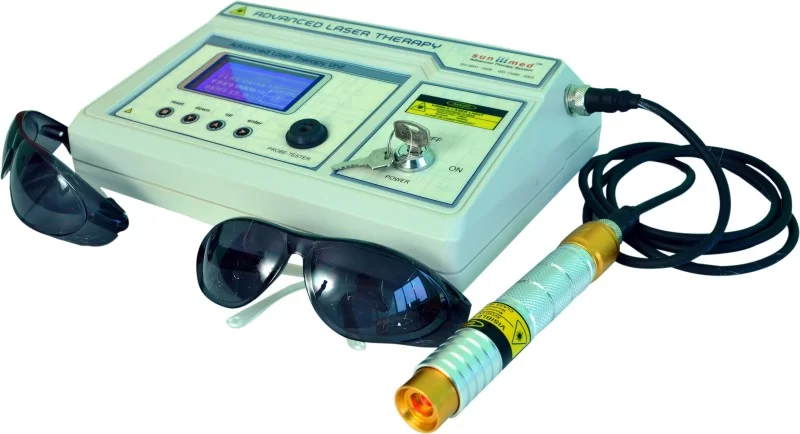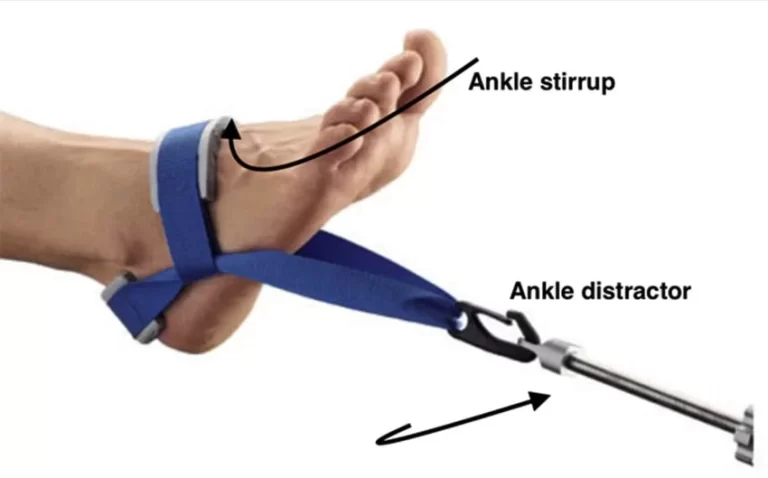LASER therapy
Full form LASER Therapy :
Light Amplification by Stimulated Emission of Radiation – LASER
Introduction of LASER Therapy :
- Laser Therapy involves the application of low-intensity laser light to relieve pain caused due to the damage of soft tissue.
- It facilitates tissue repair and restores normal cell function.
- It is used by experts to heal wounds and pain.
- The level of light is quite low compared to other forms of Laser Therapy, such as those used to destroy tumors and coagulate tissues.
Properties of LASER Therapy :
- Compressed light of a wavelength forms the cold, red part of the spectrum of electromagnetic radiation.
- Monochromatic = single wavelength, single color.
- Coherent = travels in a straight line.
- Polarized = concentrates its beam in a defined location/spot.
History of LASER Therapy :
- Albert Einstein = first described this therapy that was transformed into laser therapy.
- By the end of the 60’s Endre Master = was resorting to wound healing through laser therapy.
- In the early 1960’s, the first low-level laser was developed.
- In Feb . 2002 = the microlight 830 [ ML 830 ] received FDA approval for carpal tunnel syndrome treatment.
Class level of LASER by AEL :
- It is classified by the FDA’s Center for Devices & Radio Logical Health based on the Accessible Emission Limit [AEL].
- Incapable of producing damaging radiation levels.
- Power visible LASER [ 400-700 nm wavelength,1 nW ].
- Medium-power LASER [ need eye protection.
- High power LASER [ more than 500 nW ] [ Present fire hazard ].
Classification of LASER :

- According to the nature of the material placed between two reflecting surface
- According to intensity
- According to hazards
According to the nature of the material placed between two reflecting surfaces:
Crystal lasers [ solid-state lasers ]
- Ruby crystal [ aluminum oxide + chromium ]
- Neodymium crystal is embedded in yttrium-aluminium garnet [ Nd: YAG ] lasers
Gas laser :
- Helium-neon
- Argon
- Carbon dioxide
Semiconductor or diode laser :
- Gallium arsenide [ GaAs ]
Liquid laser :
- Polypropylene
- Oxazine
Chemical laser :
- It is with high intensity not used therapeutically but used in industrial production.
According to intensity :
High power :
- It is known as hot lasers because of the thermal response they generate.
- There are used in the medical realms in numerous areas.
- Including surgical cutting and coagulation , ophthalmologist , dermatological and vascular specialties.
Low power :
- It is used for wound healing and pain management.
- Their lasers produce a maximal output of less than a milliwatt causing photo-chemical, rather than thermal effects.
- No tissue warming occurs.
According to hazards :
| CLASS – 1 | CLASS – 2 | CLASS – 3 | CLASS – 4 |
| Less than 0.5 mW | Less than 1 mW | 1 mW to 500 mW | More than 500 mW |
| Visible & non – visible | Visible | Visible & invisible | Visible |
| No eye or skin danger | Safe for shirt periods on eyes &extended on skin | Eye danger can result form an indirect or reflected beam | Helium-neon Galium Arsenide |
| Laser printer Car entry, CD player | Helium neon | Helium-neon | Co2 , Argon , YAG laser |
| No heating / No healing | No heating / no healing | MPE can be exceeded with limited effects | Dehydrates tissue |
Types of LASER :
- High power LASER
- Low power LASER
High power LASER :

- It is also known as hot lasers because of the thermal response they generate.
- They are used in surgical cutting, and coagulation conditions, destroy tumors, and coagulate tissues.
Low power LASER

- It is also known as Cold LASER.
- Low-power LASER acts according to the Arndt-Schulz principle which states that if a stimulus is too weak, no effect is seen.
- Increased stimulation and optimal dose lead to the optimal effect, while further dose increase leads to a decreased effect, and furthermore increase leads to inhibition of stimulation is also known as photobiomodulation.
- Used in wound healing and pain management.
- Low laser is a pain-free, non-invasive method.
| High lasers | Low lasers |
| Surgical lasers | Medical lasers |
| Hard lasers | Soft lasers |
| Thermal lasers | Sub thermal lasers |
| Energy (3000-10000 Mw) lasers | Energy 1-500 mW lasers |
| Therapeutic (hot ) lasers produce a maximum output of 500 mW or 0.5 Watts | Therapeutic (cold) lasers produce a maximum output of 90 mW or less |
| 1000 nm light | 600- 1000 nm light |
Production of Laser:
- A laser device is made up of an optical cavity or chamber that contains an active medium for which the laser is named.
- The chamber has mirrors on either end that are perfectly parallel to each other within a single wavelength of light.
- One of the mirrors is partially open. Electricity or energy is added to the medium which excites it.
- The active medium atoms are reflected back and forth across the mirrors within the chambers. this causes more excitation of atoms within the medium.
- Laser light is then emitted through the partially reflective end of the mirror.
Production of light :
1. Electron is pumped to a higher energy level.
2. The pumping level is unstable so the electron quickly jumps to a slightly lower energy level.
3. The electron relaxes to a lower energy state and releases a photon.
4. Light and an electron in an excited energy level produce two photons of the same wavelength and phase.
5. Mirror reflects the photons or laser light is emitted.
Components of LASER generator :

- Power supply = electrical power supply that can deliver up to 10000 volts & 100 amps
- Lasing medium = gas, solid, liquid
- Pumping device = high voltage, photo flash lamps
- Optical resonant cavity = contains lasing medium
How does LASER Work?
- When the light source is placed against the skin, the photons penetrate several centimeters and get absorbed by the mitochondria.
- The energy fuels many positive physiological responses resulting in restoration of normal cell morphology and function but at an enhanced rate.
- Targeted in hemoglobin and cytochrome oxidase, the high-power diode laser could help in respiration and then as a result have a good performance therapy.
EFFECTS OF LASER THERAPY:
- This procedure is generally safe, effective, and non-invasive to use.
- Although you will feel the laser device touching your skin the procedure is painless, no vibration or heat is felt.
- The non-thermal photons of light that are emitted from the Laser, pass through the skin layers.
- Once the light passes through the layers of the skin and reaches the target area.
- The body tissue then absorbs the light and initiates a series of events in the cell resulting in the healing of damaged or injured tissue.
- Reduction in pain and inflammation, and an overall reduction in healing time by increasing intracellular metabolism.
Most commonly used LASER :
- Helium-neon (He-Ne)
- Gallium arsenide (Ga-As)
Helium-neon (He-Ne):

- In this laser, a mixture of helium gas and neon is used in a pressurized tube.
- This creates a laser in the red portion of the electromagnetic spectrum with a wavelength of 632.8nm.
- The power output of the HnNe can vary.
- But typically runs from 1.0 to 10.0 mW depending gas density used.
Gallium arsenide (Ga-As):

- It uses a diode to produce an infrared invisible laser at a wavelength of 904nm.
- Diode lasers are composed of semiconductor silicon that is cut and layered.
- An electrical source is applied to each side and lasing action is produced at the junction of the two surfaces.
- The surfaces function as partially reflecting surfaces that produce coherent light.
- This laser is given in pulsed form because of the heat produced by it.
- The 94 -nm laser is delivered in a pulsed mode because of the heat produced at the junction of the diode chips.
- The diode laser can single beam or a multi-source cluster beam.
Preparation of the patient for LASER Therapy :
- The skin to be treated is cleaned to lower the skin resistance.
- Gel sprays or water is applied to the skin to lower the resistance.
- Wearing of protective glass by therapist and patient.
- Working in a well-lit room.
- Avoiding reflective surfaces with the beam.
- The skin in the area of electrode placement should be cleaned by saline water, soap, or Vaseline to lower skin resistance.
- Electrodes should be fixed in position, using mending tapes to maintain good contact throughout the treatment period.
Calculation of LASER Therapy doses :
It is dependent on :
- The output power of the laser in mw
- The time of exposure in the second
- The beam surface area of the laser in cm2
- Energy or total energy [ joule ] = watt X seconds
- Time of exposure [ second ] = joule/watts
Depth of penetration:
He-Ne laser energy:
- Absorbed rapidly in the superficial structures, especially within the first 2 mm of tissue.
- The He-Ne has an indirect effect on the tissues up to 8-10mm.
GaAs laser energy:
- Ga-As laser which has a longer wavelength is directly absorbed in tissues at depths of 1-2 cm and has an indirect effect up to 5 cm.
LASER Therapy treatment techniques:

- Contact technique = GaAs only for trigger points or around the wound.
- Non-contact technique = for superficial wound or stimulation of wound bed.
Difference between contact and non-contact techniques of LASER :
| NO | TITLE | CONTACT | NON – CONTACT |
| 1 | Use | Pain relief | Open wound |
| 2 | Distance between laser probe and skin | 0 cm | 0.5 – 1 cm |
| 3 | Held of probe | Perpendicular to skin | Perpendicular to site of radiation |
| 4 | Penetration | Deeper | Superficial |
| 5 | Power density | Maximize | Minimize |
| 6 | Reflection | Minimize | Maximize |
| 7 | Diameter of head | 76 mm | 13 mm |
| 8 | Power | No wasted | Wasted |
Physiological effect of LASER Therapy :
- Reducing pain
- Reducing inflammation
- Promoting tissue healing
- Recovery from nerve injury
- Consequently, as a result of these effects, laser of this type could have a valuable role to play in the treatment of painful soft tissue injuries.
- It is important for accurate assessment and diagnosis to determine the area for laser application is vitally important.
Indication of LASER Therapy :
Orthopedic causes and sports causes :
- General Chronic
- Tennis elbow
- Plantar fasciitis
- Shoulder impingement
- Frozen shoulder
- Disc herniation
- Pelvic Dysfunction
- Osteoarthritis of the knee, hip, and ankle
- Rheumatoid arthritis
- Tendinitis
- Tennis Elbow
- Temporal mandibular Joint
Neurogenic causes:
- Diabetic Neuropathy
- Sciatica
- Trigeminal neuralgia
Dermatological causes:
- Hip or shoulder bursitis
- Wound
- Ulcer
Contraindications of LASER Therapy :
- Cancer = Do not use it over the cancerous part of the body.
- Epileptics = Do not use in epileptic patients.
- Cardiac patients = pacemaker
- Pregnancy = The laser rays should not reach the fetus.
- Skin infection








9 Comments